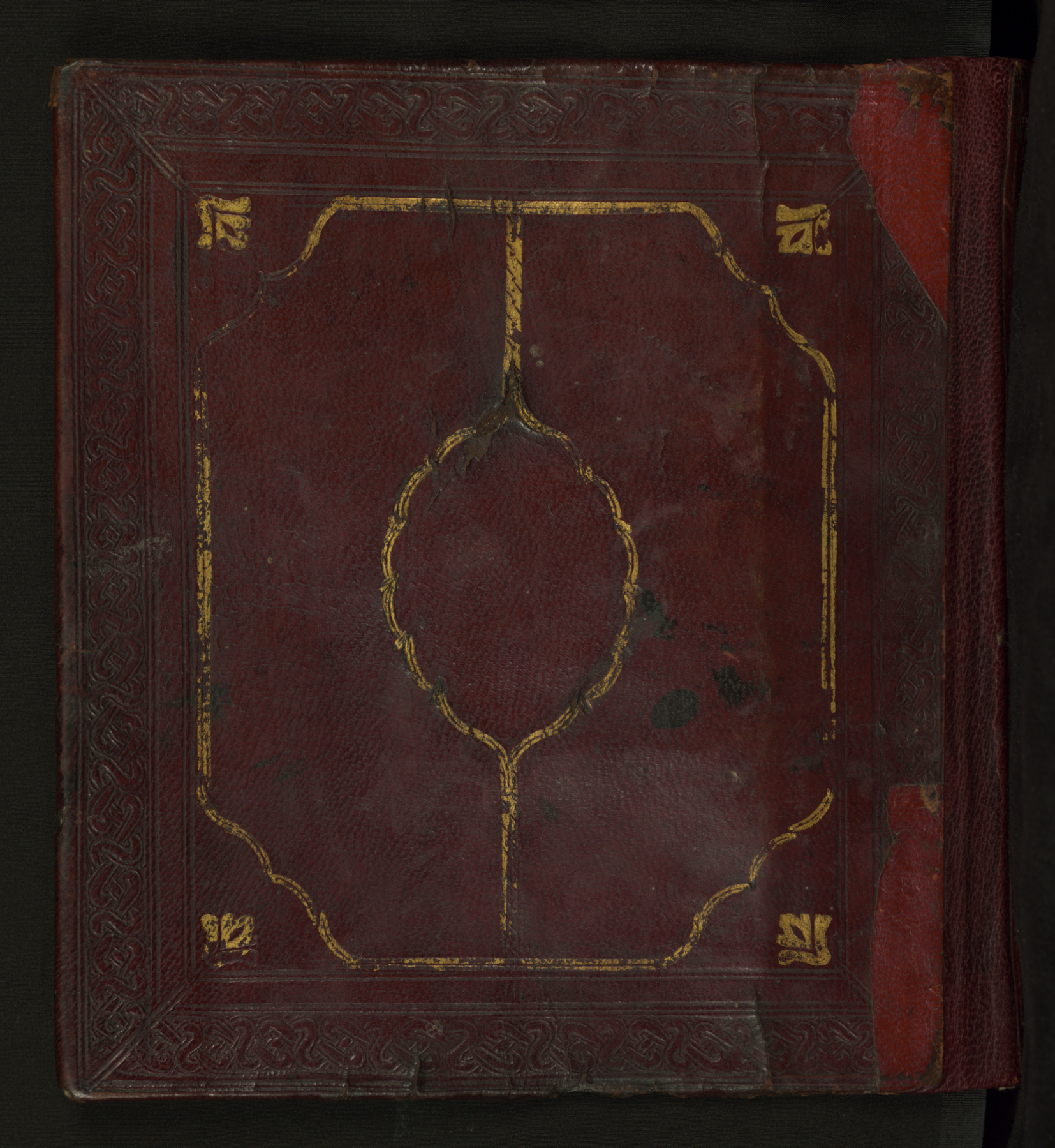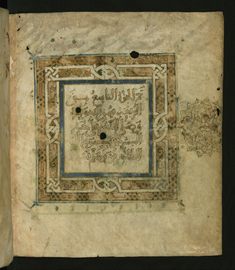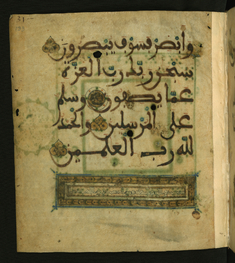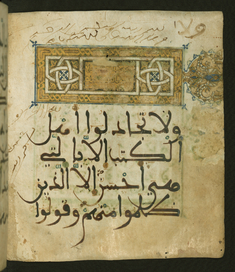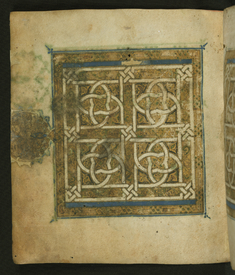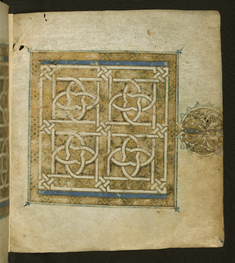Qur'an
(Manuscripts and Rare Books, Islamic World , Islamic Manuscripts)
Walters manuscript W.556, a square-format manuscript on parchment, is volume 9 (al-juz' al-tasi') of the Qur'an, covering chapter 29 (Surat 'ankabut), verse 46, to the end of chapter 37 (Surat al-saffat). It dates to the 6th century AH/AD 12th and was produced in the Maghreb. The text is written in Maghribi script in dark brown ink and vocalized with polychrome dots. The manuscript opens with a double-page illuminated frontispiece (fols. 3b-4a) and incipit (fol. 4b). Verse markers in the shape of trefoils indicate the end of each verse, and the letter ha' in the form of a teardrop and discs with rosettes indicate groups of five and ten verses. The illuminated finispiece with colophon (fol. 133b) states that it is the end of volume 9 of the Qur'an (al-juz' al-tasi' min al-rab'ah) and offers a prayer for the Prophet Muhammad and his family. The dark red goatskin binding dates to the 10th century AH/AD 16th.
Provenance
Provenance (from the French provenir, 'to come from/forth') is the chronology of the ownership, custody, or location of a historical object. Learn more about provenance at the Walters.
Henry Walters, Baltimore [date and mode of acquisition unknown]; Walters Art Museum, 1931, by bequest.
Exhibitions
| 2007 | Speaking the Word of God: Illuminated Korans from the Walters Art Museum. The Walters Art Museum, Baltimore. |
Geographies
Maghreb (Place of Origin)
Measurements
Folio H: 6 5/16 x W: 5 7/8 in. (16 x 15 cm)
Credit Line
Acquired by Henry Walters
Location in Museum
Not on view
Accession Number
In libraries, galleries, museums, and archives, an accession number is a unique identifier assigned to each object in the collection.
In libraries, galleries, museums, and archives, an accession number is a unique identifier assigned to each object in the collection.
W.556

